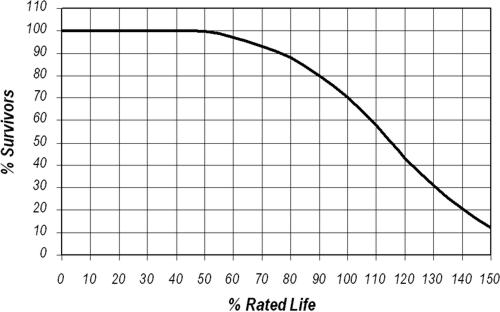|
|
|
|
|
The nominal life of all European GLS lamps has been standardised at 1000 hours, almost since their introduction. On numerous occasions queries have arisen as to whether this really is the most economic life, but such are the variations in users' requirements and in the prices they pay for electricity and lamps that there can be no universal optimum life which will suit everybody.
Incandescent lamps are manufactured according to British Standard BS 161 (IEC 60064), and the committee responsible for this includes representatives from a wide cross-section of interests such as government departments, professional institutions, organisations representing large users, electrical contractors and the lighting industry. They review all the factors involved such as lamp cost, electricity cost, cost of replacing a lamp, lamp efficiencies at different rated lives etc. and on each occasion they have concluded that the long established life of 1000 hours should remain the standard rating. In fact to minimise customer complaints, the standard filament with a declared life of 1000 hours typically has an average design life of 1200 hours.
Rigid control of the lamp manufacturing processes has lead to great uniformity in the lives of individual lamps, but absolute uniformity is unattainable. For example if one hundred similar lamps were all put on test under identical conditions, they would not simply run for 1000 hours and then all fail simultaneously. Instead lamp lives are expressed in the form of a Survival Curve, shown in Figure I19 below. For incandescent lamps it is customary to state the rated life as being when 70% of the sample is still burning.
|

Figure I19 - Typical Survival Curve for Incandescent GLS Lamps
|
In some installations where the cost of lamp replacement is particularly high, for example above a staircase, in a traffic signal or some other difficult location, it is beneficial to the user to have a lamp life of greater than 1000 hours. To satisfy this need the Doublelife GLS lamp is also manufactured, having a declared life of 2000 hours. These are similar in construction to standard GLS lamps but the filament is run at a lower temperature. This reduces the rate of evaporation so the filament lasts longer. The lower filament temperature also means that the lamp will not produce light as efficiently, and the customer must accept a light output reduction of around 15-20%. Some companies also market ultra-long life 16,000 hour lamps but in practice these are a false economy. They are so dim and inefficient to be of little use, and are certainly not economically viable for most lighting installations owing to the considerably greater electricity consumption that is required to maintain a given light level.
In other applications, such as photographic and studio lamps, a large amount of light is required and the lamp life is not so important. This is taken to extremes in the case of Photoflood GLS lamps, which are over-run to produce a brighter and whiter light but have a rated life sometimes as short as only two hours. |
|
|
|
|
|